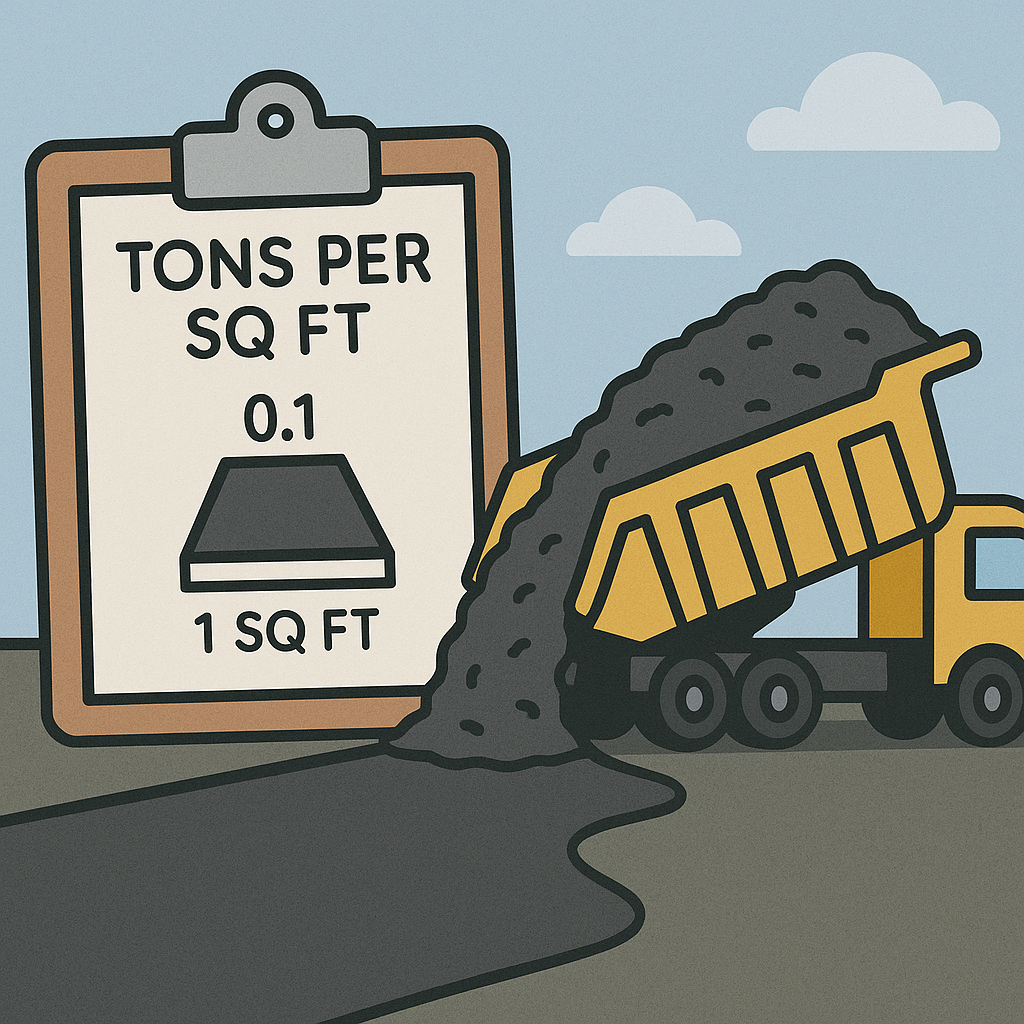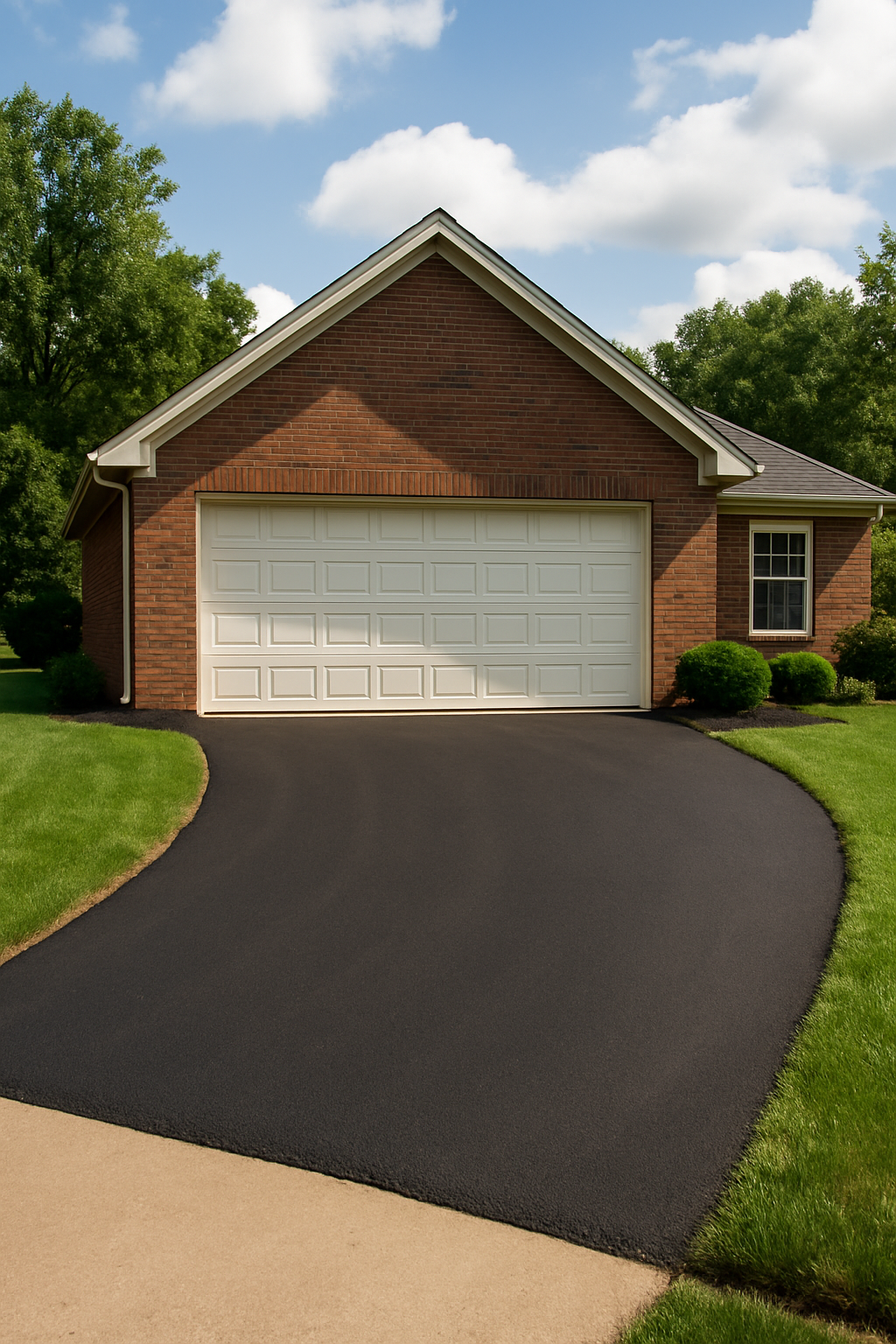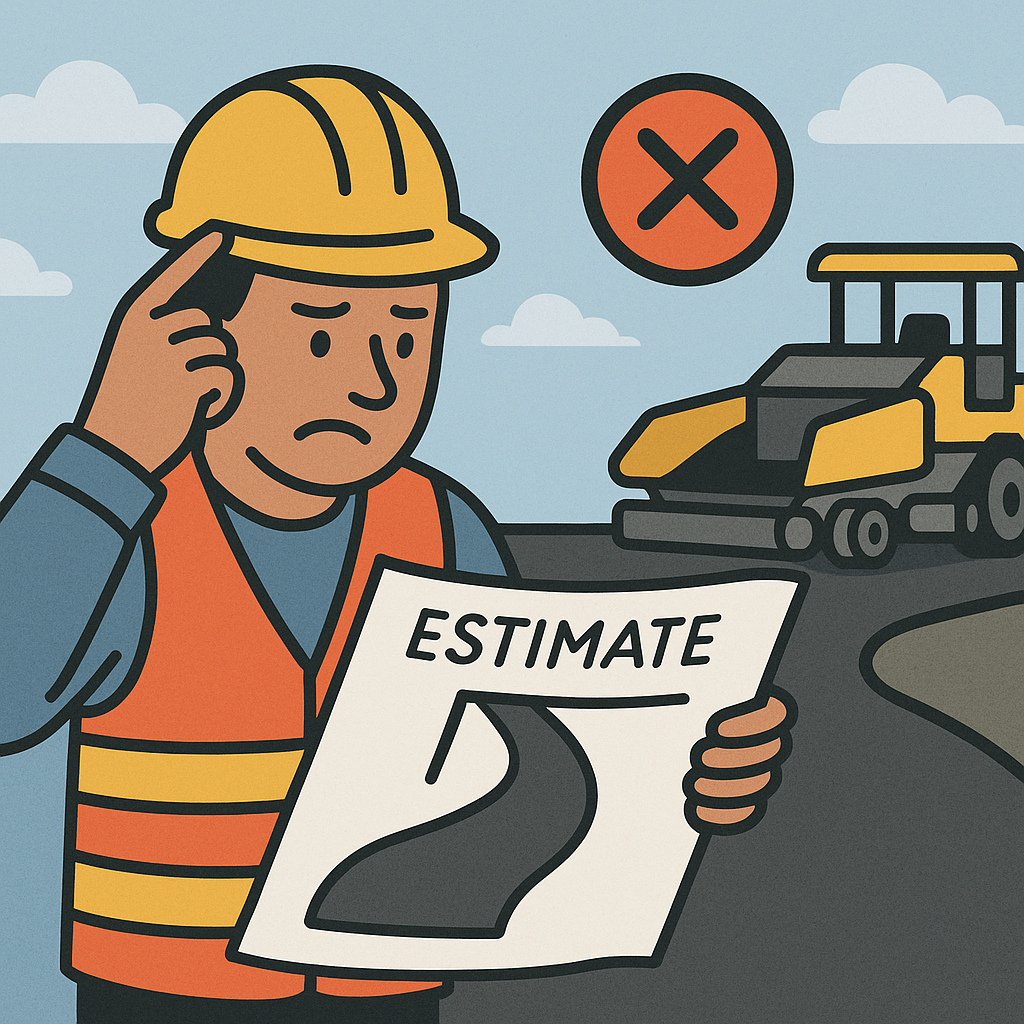Measurement Guide
Calculating Asphalt for Square Feet Projects
Accurately converting square footage measurements into the precise amount of asphalt needed is essential for project planning, budgeting, and material ordering. This comprehensive guide walks you through the entire process, from basic measurements to final calculations, ensuring you get exactly the right amount of material for your paving project without costly overages or shortages.

The Complete Calculation Process
Converting from square footage to tons of asphalt involves several steps, each requiring attention to detail to ensure accuracy. Follow this systematic approach for reliable results every time:
Step 1: Measure Area in Square Feet
Begin by determining the total area of your project in square feet. For rectangular areas, multiply length by width. For irregular shapes, break the area into simple geometric forms (rectangles, triangles) and add them together.
Example: A rectangular driveway measuring 12 feet wide by 25 feet long
Area = 12 ft × 25 ft = 300 square feet
Pro Tip: For irregular shapes, take multiple measurements and create a sketch. Divide complex areas into simple shapes for more accurate calculations.
Step 2: Determine Required Depth
Asphalt depth varies based on the intended use of the pavement. Residential driveways typically require 2-3 inches, while commercial applications may need 3-5 inches or more.
Example: For a residential driveway, we'll use a standard 3-inch depth
Since calculations require consistent units, convert inches to feet:
3 inches ÷ 12 = 0.25 feet
Pro Tip: For quick inch-to-feet conversions, divide the inch value by 12. Common conversions: 2" = 0.167', 3" = 0.25', 4" = 0.333'
Step 3: Calculate Volume in Cubic Feet
Multiply the area by the depth to determine the volume of asphalt needed in cubic feet.
Example: Using our measurements from steps 1 and 2
Volume = Area × Depth
Volume = 300 ft² × 0.25 ft = 75 cubic feet
Step 4: Convert Volume to Weight
Asphalt has a standard density of approximately 145 pounds per cubic foot when compacted. Multiply the volume by this density factor to determine the weight in pounds.
Example: Converting our volume to weight
Weight in pounds = Volume × Density
Weight in pounds = 75 ft³ × 145 lb/ft³ = 10,875 pounds
Step 5: Convert Pounds to Tons
Since asphalt is typically sold by the ton (2,000 pounds), divide the total weight in pounds by 2,000 to get the required tonnage.
Example: Converting pounds to tons
Weight in tons = Weight in pounds ÷ 2,000
Weight in tons = 10,875 ÷ 2,000 = 5.44 tons
Pro Tip: Always round up to the nearest quarter or half ton when ordering materials to ensure you have enough to complete the project.
The Complete Formula
For efficiency, you can combine all the steps into a single formula:
Tons of Asphalt = (Area in ft² × Depth in ft × 145) ÷ 2,000
Using our example:
Tons = (300 ft² × 0.25 ft × 145) ÷ 2,000
Tons = 10,875 ÷ 2,000 = 5.44 tons
Accounting for Waste and Compaction
In real-world applications, it's prudent to add a buffer to your calculated amount to account for:
- Material waste during installation (spillage, uneven spreading)
- Compaction factors (asphalt compresses during installation)
- Variations in subgrade conditions (which may require additional material in some areas)
- Edge transitions and feathering (which can use more material than calculated)
Industry standard is to add 5-10% to your calculated tonnage:
Final order amount = Calculated tonnage × 1.08 (for 8% waste factor)
Final order amount = 5.44 × 1.08 = 5.88 tons (round up to 6 tons)
Common Calculation Mistakes to Avoid
- Unit inconsistency. Always ensure you're using consistent units throughout your calculations. Mixing feet and inches or using different units for different dimensions is a common source of significant errors.
- Forgetting depth conversion. Remember to convert depth from inches to feet before calculating volume. Using inches instead of feet in the formula will result in a calculation that's off by a factor of 12.
- Neglecting waste factor. Failing to account for waste and compaction can leave you short of materials mid-project, resulting in delays and potential additional delivery charges.
Tools and Resources
For faster, error-free calculations, take advantage of these helpful resources:
- Use the asphalt calculator for instant, accurate results with built-in waste factors
- Determine the appropriate depth for your specific project with this depth guide
- Learn proper measuring techniques in this measuring guide
- Understand how thickness affects cost in this thickness impact guide
- For driveway-specific guidance, see this driveway estimation guide
By following this systematic approach to calculating asphalt needs based on square footage, you'll ensure your project has exactly the right amount of material, helping you stay on budget while achieving professional-quality results. Remember that proper preparation and accurate measurements are the foundation of any successful paving project.



